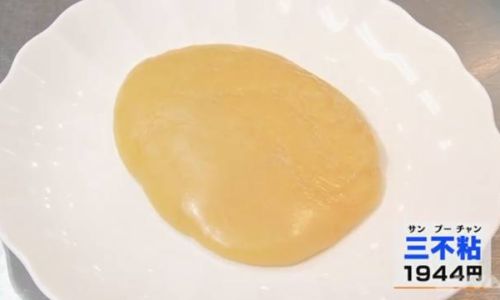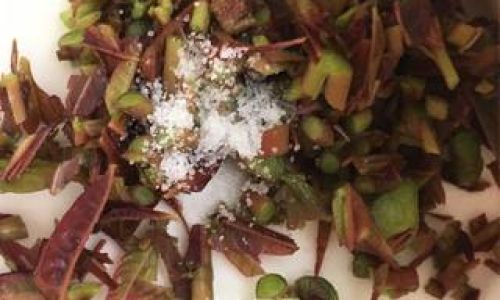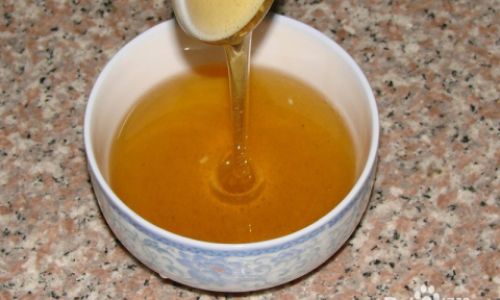Introduction
In the vast culinary landscape of China, traditional dishes often carry rich historical and cultural significance. Among these, “San Bu Zhan,” or “Three-Non-Stick Dish,” stands out for its unique preparation technique and delightful taste. This dish, which originated in the Henan province, is characterized by its ability to not stick to the spoon, the pan, or the teeth, hence its name. San Bu Zhan is typically made with eggs, sugar, and starch, and its preparation requires patience, precision, and skill. In this article, we will delve into the intricacies of how to make the perfect San Bu Zhan, from selecting the right ingredients to mastering the cooking process.
Ingredients Selection

Before diving into the preparation, it’s crucial to understand the role each ingredient plays in creating the perfect San Bu Zhan.
-
Eggs: Traditionally, San Bu Zhan is made with egg yolks rather than whole eggs. The yolks provide a rich, creamy texture and a beautiful golden hue. It’s important to use fresh egg yolks for the best results.
-
Sugar: Granulated sugar is the primary sweetening agent in San Bu Zhan. The sugar not only adds sweetness but also caramelizes during cooking, contributing to the dish’s complex flavor profile.
-
Starch: Cornstarch or potato starch is used to thicken the mixture and give it the characteristic non-stick properties. The starch helps to create a smooth, glossy texture that prevents the dish from sticking to utensils.
-
Water (Optional): Some recipes call for a small amount of water to help with the cooking process, but it’s not always necessary. The use of water depends on the cook’s preference and the specific recipe being followed.
-
Oil: A small amount of oil is used to grease the pan and prevent sticking. It’s important to use a neutral-flavored oil like vegetable or canola oil to avoid overpowering the dish’s delicate flavors.
Preparation and Cooking Process
Now that we’ve covered the ingredients, let’s move on to the preparation and cooking process.
Step 1: Preparation of Ingredients
-
Separate the Egg Yolks: Begin by separating the egg yolks from the whites. You can do this using an egg separator or by carefully cracking the egg and letting the whites slip through your fingers while holding the yolk. Place the yolks in a bowl and set aside.
-
Measure the Sugar and Starch: Measure out the required amounts of granulated sugar and starch. It’s important to be precise with these measurements to ensure the correct consistency of the final dish.
Step 2: Mixing the Ingredients
-
Combine Yolks, Sugar, and Starch: In a mixing bowl, whisk together the egg yolks, sugar, and starch until well combined. The mixture should be smooth and free of lumps.
-
Add Water (if Using): If your recipe calls for water, add it in small increments while continuing to whisk the mixture. Be careful not to add too much water, as this can affect the final texture.
Step 3: Cooking the Mixture
-
Heat the Pan: Place a non-stick skillet or wok over medium-low heat. Add a small amount of oil to the pan and swirl it around to coat the bottom evenly.
-
Pour in the Mixture: Once the pan is heated, pour in the egg yolk mixture. Stir constantly with a spatula or wooden spoon to prevent sticking and to ensure even cooking.

-
Cook Slowly: The cooking process for San Bu Zhan is slow and requires patience. Continue to stir the mixture over medium-low heat, gradually scraping the bottom and sides of the pan to prevent sticking. As the mixture cooks, it will thicken and turn a pale golden color.
-
Adjust the Heat: Be attentive to the heat level. If the mixture starts to brown too quickly, reduce the heat. Conversely, if it seems to be cooking too slowly, you can slightly increase the heat. The goal is to cook the mixture evenly without burning it.
-
Stir Continuously: Stirring is crucial throughout the cooking process. The constant stirring helps to distribute the heat evenly and prevents the mixture from forming lumps or sticking to the pan. As the mixture continues to cook, it will become smoother and more glossy.
-
Test for Doneness: After about 20-30 minutes of continuous stirring, the mixture should reach the point where it no longer sticks to the spoon or the pan. To test for doneness, lift a small amount of the mixture with your spatula and let it drip back into the pan. The mixture should form smooth, ribbon-like strands that hold their shape.
Step 4: Finishing Touches
-
Remove from Heat: Once the mixture has reached the desired consistency and is no longer sticky, remove it from the heat.
-
Cool Slightly: Allow the San Bu Zhan to cool slightly before serving. This will give it a chance to set and firm up further.
-
Serve: Transfer the San Bu Zhan to a serving dish and garnish with a sprinkle of powdered sugar or a few slices of fresh fruit, if desired. Serve immediately while hot.
Tips for Success
-
Patience is Key: Making San Bu Zhan requires patience and attention to detail. Rushing the cooking process can result in a sticky, lumpy dish.
-
Use a Non-Stick Pan: A good-quality non-stick pan is essential for making San Bu Zhan. It will make the stirring and cooking process much easier and prevent the mixture from sticking to the pan.
-
Constant Stirring: Stirring continuously is crucial for achieving the perfect texture. Make sure to scrape the bottom and sides of the pan frequently to prevent sticking.
-
Watch the Heat: Keep a close eye on the heat level. Cooking over too high heat can cause the mixture to burn, while too low heat can prolong the cooking process.
-
Practice Makes Perfect: Like any culinary skill, making San Bu Zhan takes practice. Don’t be discouraged if your first attempt doesn’t turn out perfectly. With time and practice, you’ll get the hang of it.
Conclusion
San Bu Zhan is a delightful and unique dish that combines sweetness, creaminess, and a non-stick texture that is truly remarkable. By following the steps outlined in this article and paying attention to the details, you can make the perfect San Bu Zhan at home. Whether you’re a seasoned chef or a home cook looking to try something new, this dish is sure to impress with its beautiful presentation and delicious flavor. So, gather your ingredients, heat up your pan, and start stirring your way to culinary perfection with San Bu Zhan.





0 comments